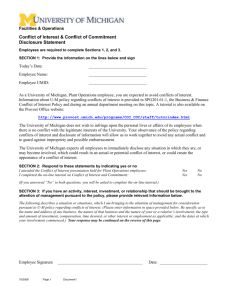Group Dynamics and Project Management for beginners
advertisement
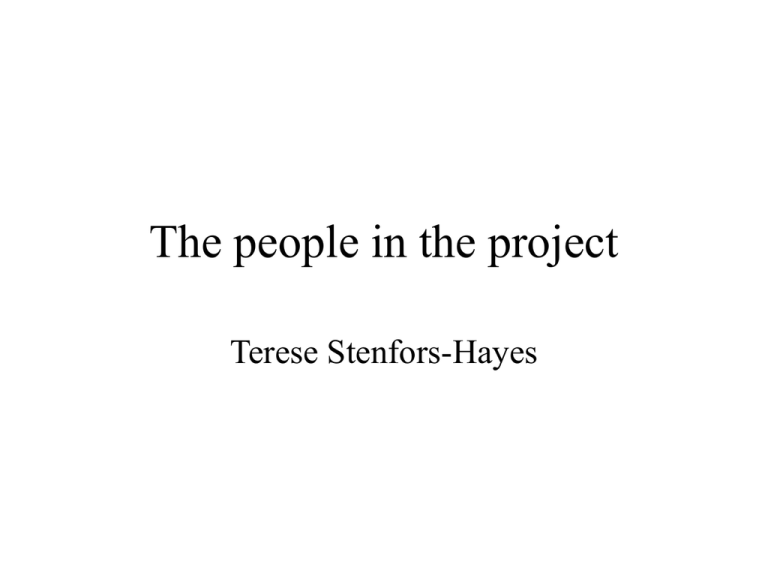
The people in the project Terese Stenfors-Hayes Agenda and objectives • Agenda: Creating and managing a project team. – Conflict management, motivation, group dynamics and some leadership theories • Objective: Basic understanding of theories for the topics above. Project manager vs. functional/traditional manager • Limited time • Only one objective • Given competencies within the group • Greater risks • Rapid changes • Greater risk of failure • No formal staff responsibility • Several objectives to prioritise between • Staff needs competence development • Greater distance to employees • Greater formal power • Needs to obey the rules and regulations of the organisation The manager’s different roles (Mintzberg) • Interpersonal – Team leader, ambassador and ceremonial leader • Informative – Listener, information giver and spokes person • Decision making – Visionary, problem solver, resurce allocator and negotiator Leadership • The team paradox • Great person theory – Something you are born with • Great opportunity theory – Something you can learn • Ask what the leader does instead of who he is • The more complex a project, the more formal the style of management should be • The more technically uncertain a project, the more flexible the style of management should be Leadership styles (Lewin & Lippit) • Authoritative • Democratic • Laissez-faire Assumptions about humans (Schein) • Rational-economic assumptions – Related to theory X (McGregor) • Social assumptions • Self-actualisation assumptions – Maslow, theory Y (McGregor) • The complicated human Power (French & Raven) • • • • • Legitimate Reward Coercive Expert Referent How to create a team Four important aspects • Task • People • Context • Process Task • What type of task is it? – Tactical – Problem solving – Creative • Autonomy? • Subjective or objective solution? • Task design for individuals People • Number? • Competency? – Technical – Communicative – Problem solving • • • • • • • Roles? Diversity? Status system? Norms? Unity? Cohesiveness? Trust? Context • Resurces • Leadership and structure • Feedback and rewards Process • • • • • • • Aim Objective Confidence Conflict management Responsibility Communication Openness Why work in groups? (Schein) • Affiliation needs • Sense of identity and maintaining our selfesteem • Establishing and testing social reality • Reducing insecurity, anxiety and sense of powerlessness • Problem-solving, task-accomplishing mechanism Why is it so difficult? • • • • • • The work is so temporary Everyone is used to his/her ways Geographical diversity Size Cultural diversity Lack of time Group development • • • • • Forming Storming Norming Performing Adjourning Characteristics of effective work groups (Mullins 2002) • • • • • • • • • A belief in shared aims and objectives A sense of commitment to the group Acceptance of group values and norms A feeling of mutual trust and dependency Full participation by all members and decision making by consensus Free flow of information and communications The open expression of feelings and disagreements The resolution of conflict by the members themselves A lower level of staff turnover, absenteeism, accidents, errors and complaints Belbin’s 9 team roles • • • • • • • • • Specialist Monitor/evaluator Plant Teamworker Completer/finisher Shaper Coordinator Implementer Resource investigator Social Loafing • Ways to avoid it: – – – – – Individual results Fun jobs Reward and evaluate individuals Participation in goal creation Etc… • …is only a problem when intrinsic motivation is low Groupthink (Janis 1972) • • • • • • The group feels invulnerable Warnings are rationalised away Unquestioned belief in the group’s morality Opposers are ridiculed and stereotyped Group pressure on opposers is high Silence is taken as consent (a false sense of group unanimity) • Members censor themselves not to deviate from norms • The group is protected from information or individuals who would disrupt consensus Why do we argue (Lee)? • Communication problems • Structural design • Personal differences Types of conflics • • • • Relationship conflicts Task conflicts Process conflicts Conflicts can change from one type to another. • And in most cases the conflict is unnecessary Dealing with conflicts • Five ways: – – – – – Accomodation Confrontation Compromise Collaboration Avoiding Avoiding or changing conflicts • • • • • • Strengthen the group identity Acknowledge individual achievements Good environment and surroundings Identify a common goal Practice conflict management Separate people, tasks and other issues Why is motivation important? • To increase employee’s interest in taking an active responsiblity for work tasks and stated goals • To decrease the number of conflicts, complaints, absence and staff turnover • To increase ability to handle change and misfortune • To increase chances to meet business objectives and improve results Kill motivation • Unfair treatment • Too much or too little to do • Little participation • Favouring • Unrealistic goals • Uncertainty for the future • Faulty expectations • Broken promises • Unclear work tasks, rules and goals • Threats • Lack of challenges • • Bureaucracy Weak connection between reward and achievement • Lack of trust for management • Failing communication • Scandals and doubtful ethics • Limited responsibilities • Too much control and supervision • No feeling of control • Internal politics Creating motivation • The daily work • Leadership • Personal development • Social relations • Status and image • Respect and recognition • Support for own ideas and initiatives • ”Speed” of work • Salary and benefits • New things happening at the workplace A motivating manager… (Insight Lab AB 2003) • • • • • • • Self insight and a clear idea Interest in other people Active leadership Clear delegation Social relations and feeling of togetherness Support employee’s personal development Have a vision and be continuously improving Hackman and Oldman’s work design model How is it implemented? • • • • • Combine tasks Publish results Let people work in teams Empower Open feedback channels Goals •Goals are a motivating force • Specific goals lead to increased performance • Difficult goals, when accepted, result in higher output than easy goals • Participation in setting the goals might motivate further • Set goals only, not the route to achieve it •Private and organisational goals might collide •Goals should be: –Few –Realistic –Agreed –Measured –Explicit –Specific, time restricted, not relative, positive •Goals need to be part of a vision •MBO is a motivational program based on goal setting Employee recognition • Using different ways to reward behaviour and publicly recognize both individual and group accomplishment • Can be almost anything… – A note… – A picture… – A thank you… • Rewarding behavior with recognition immediately leads to its repetition • To maximize motivation potential, publicly communicate who and why is being recognized • Recognizing employee’s superior performance often costs little Employee involvement • A participative process to encourage increased commitment to the organization's success • Involve workers in decisions that will affect them • Increase their autonomy and control over their work lives • Include techniques with a common core: – Employee participation – Participative management – Workplace democracy – Empowerment – Employee ownership Reward programmes • Based on what an individual values • Timely and clearly linked to a behaviour – –always or sometimes • Who, why should be publicly and clearly stated Always evaluate! • Learn for next time, both from mistakes and successes! – – – – – – – Evaluate the group Conflict Management How motivational strategies worked The work task The work process Communication Etc. Recommended reading • Essentials of Organizational Behavior – Stephen Robbins

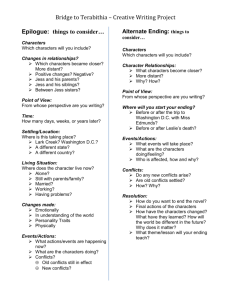
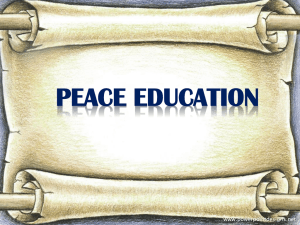
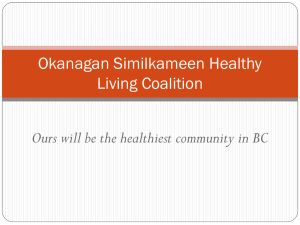
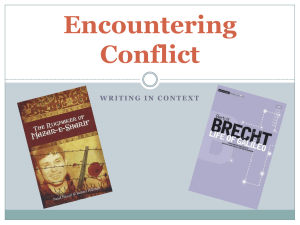
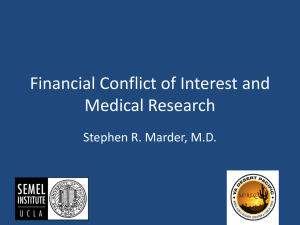
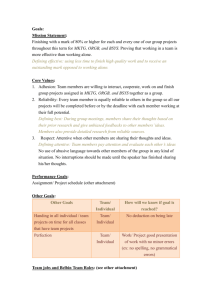
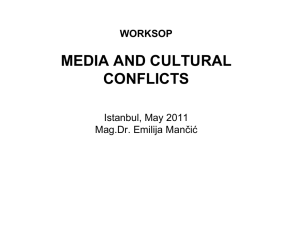
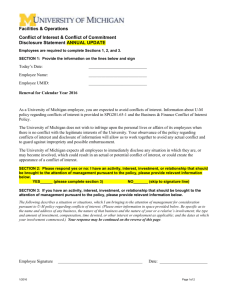
![7-01 Conflicts of Interest [September 28, 2012]](http://s3.studylib.net/store/data/007047489_1-d2a6690e7450d8e8b5531933a5aaee46-300x300.png)

